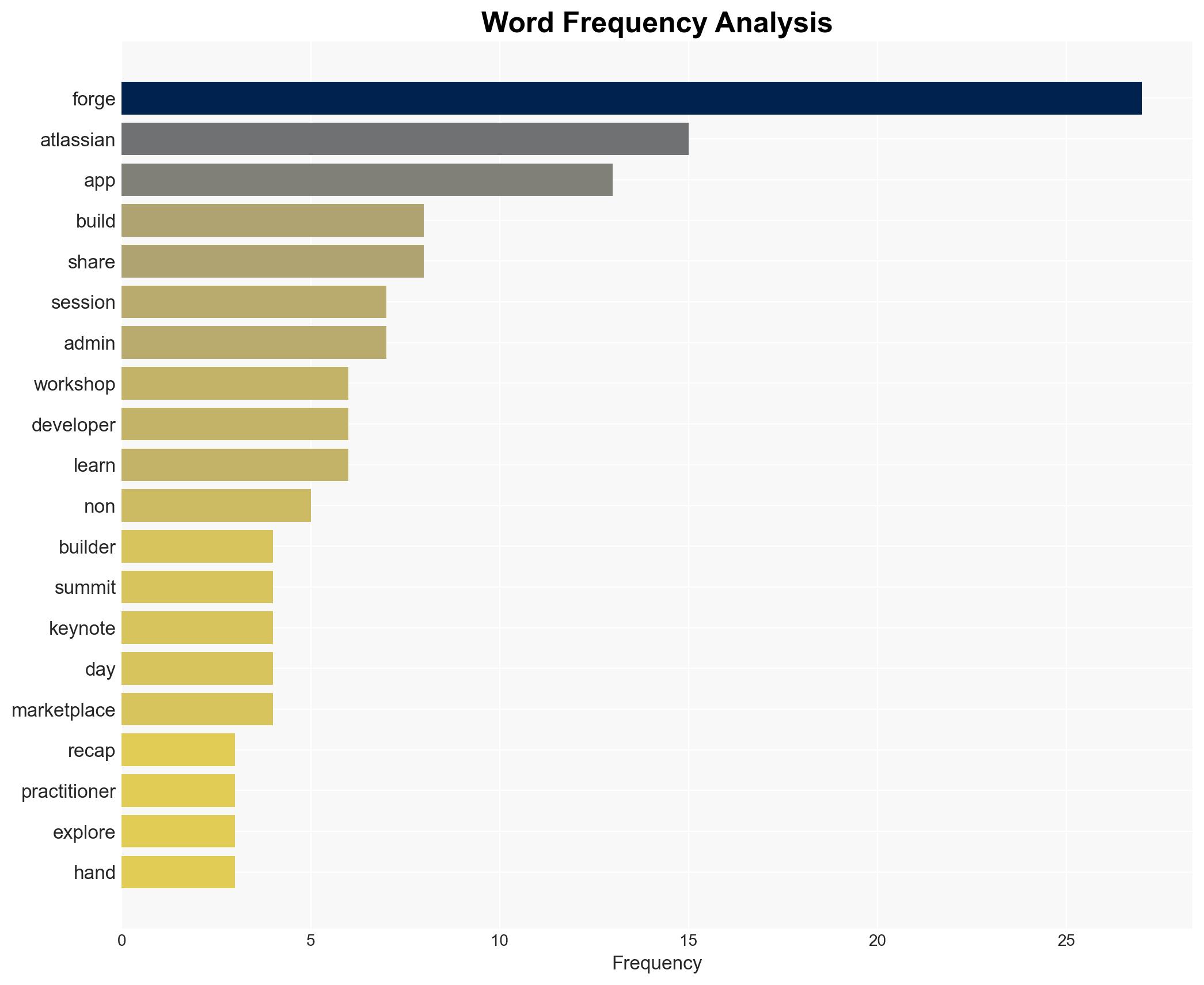Building with Forge Recap from the Atlassian Builders Summit – Atlassian.com
Published on: 2025-11-13
AI-powered OSINT brief from verified open sources. Automated NLP signal extraction with human verification. See our Methodology and Why WorldWideWatchers.
Intelligence Report: Building with Forge Recap from the Atlassian Builders Summit – Atlassian.com
1. BLUF (Bottom Line Up Front)
The Atlassian Builders Summit highlighted the growing importance of the Forge platform in enabling both developers and non-developers to create secure, efficient applications within the Atlassian ecosystem. The most supported hypothesis is that Atlassian is strategically positioning Forge as a central tool to enhance user engagement and expand its market reach. Confidence Level: Moderate. Recommended action includes monitoring Forge adoption rates and potential security vulnerabilities.
2. Competing Hypotheses
Hypothesis 1: Atlassian is using Forge to democratize app development, allowing non-developers to contribute to the ecosystem, thereby increasing user engagement and platform stickiness.
Hypothesis 2: The emphasis on Forge is primarily a strategic move to address security concerns and streamline app development processes, reducing dependency on third-party solutions.
Hypothesis 1 is more likely given the summit’s focus on workshops and sessions tailored for non-developers, indicating a push towards broader user participation.
3. Key Assumptions and Red Flags
Assumptions: The Forge platform is robust and user-friendly enough to support non-developers effectively. Atlassian has adequately addressed potential security vulnerabilities within Forge.
Red Flags: Over-reliance on Forge could lead to security oversights if non-developers lack the necessary expertise. There is a potential for bias in reporting the platform’s ease of use and security features.
4. Implications and Strategic Risks
The increased use of Forge could lead to a proliferation of custom apps, potentially increasing the attack surface for cyber threats. If security measures are insufficient, this could result in data breaches or exploitation of vulnerabilities. Economically, successful adoption of Forge could reduce costs associated with third-party app development, but failure could lead to increased operational costs and reputational damage.
5. Recommendations and Outlook
- Actionable steps include conducting regular security audits of Forge apps, providing additional training for non-developers, and establishing a feedback loop to continuously improve the platform.
- Best-case scenario: Forge becomes a cornerstone of Atlassian’s ecosystem, enhancing user engagement and reducing costs.
- Worst-case scenario: Security vulnerabilities lead to significant data breaches, damaging Atlassian’s reputation and financial standing.
- Most-likely scenario: Gradual adoption of Forge with ongoing improvements and security enhancements, leading to moderate growth in user engagement.
6. Key Individuals and Entities
Matt Doar, Liz Tanner, Darryl Lee, Tanya Botta, Ryan Talusan, Caterina Curti, Zishan Aslam
7. Thematic Tags
Cybersecurity, App Development, User Engagement, Atlassian Ecosystem
Structured Analytic Techniques Applied
- Adversarial Threat Simulation: Model and simulate actions of cyber adversaries to anticipate vulnerabilities and improve resilience.
- Indicators Development: Detect and monitor behavioral or technical anomalies across systems for early threat detection.
- Bayesian Scenario Modeling: Quantify uncertainty and predict cyberattack pathways using probabilistic inference.
Explore more:
Cybersecurity Briefs ·
Daily Summary ·
Methodology





